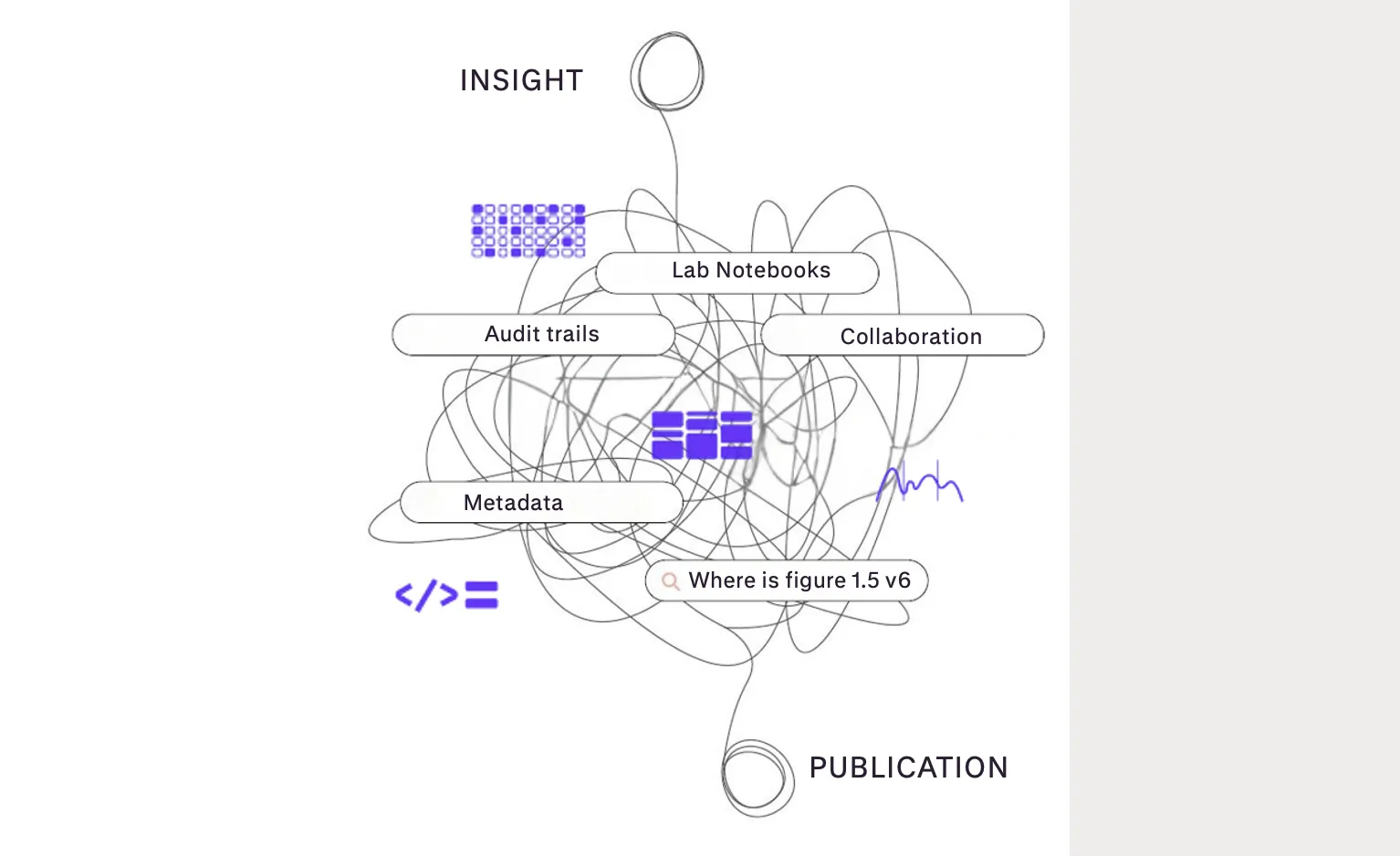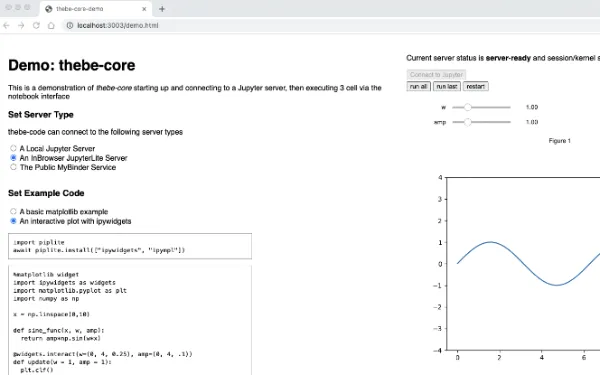SCMS: The next evolution of Curvenote
Today we’re launching Curvenote’s Scientific Content Management System (SCMS). It treats research as connected, reusable components rather than scattered files. Institutions are being asked to move faster and to prove integrity, yet source history, metadata, and credit are often lost between systems. SCMS keeps that chain of context intact from notebook platforms and repositories through review and publication, so teams can find, assemble, and share faster using trustworthy building blocks. It provides a single connective layer over existing workflows and leads to connected publishing where trust is built-in.
Lost figures, scattered files, siloed tools¶
With our SCMS, we set out to tackle a problem every researcher knows: the research publishing lifecycle: it’s messy, but for the wrong reasons. Research is happening across a whole suite of lab notebooks and other tools that don’t talk to each other. Protocols, datasets, and computational work end up stored in various folders, repositories, tools or emails that can’t easily be found or shared with others. You know that figure exists, you just can’t find that version when you need it, updating a figure with new results is even harder.. The extra time it takes to find and recreate work is slowing science down.
At the same time, the process of sharing science doesn’t tell the full story. When research gets locked into a pdf for final publication, the elements that make work reproducible are hidden. The dynamic, interactive, and data-rich nature of modern research never reaches the reader, limiting engagement and long-term usability.
With the Curvenote SCMS, the divide between research and publishing turns into a continuous flow—a connected, modular system that reflects how science actually works. It supports you at every stage by turning research outputs into building blocks that are easy to find, organize, and reuse, while integrating with the tools you already use and enabling dynamic, connected publishing.
Independent Outputs, Connected Science¶
In Curvenote’s SCMS, every piece or component of the research—videos, equations, figures— becomes an independent output. With metadata flowing in standardized ways, these modular components become shareable, citable, creditable and trackable within and across systems. You can break down past work into building blocks and compose new outputs, surfacing a full catalog of your research and its evolution into a complete story—enabling new ways to build on your science.
A living, searchable system¶
These dynamic, version-controlled components create a living catalog of research. In Curvenote’s SCMS, every output can be searched, traced, and connected back to its source. The result: labs stay organized, researchers find what they need, and collaborators build on work more quickly.
Seamless integrations¶
Curvenote’s SCMS integrates with the tools and systems researchers and institutions already use. It enables access to where the work originated, carrying forward (and backward) the trail of version history and metadata. The platform also connects with industry standard tools, including CrossRef, ORCID as well as preprint and data repositories, to support open access publishing and create an ecosystem of connected tools. [Learn more about Curvenote SCMS integrations]
Connected publishing¶
Curvenote’s SCMS enables connected publishing, with deep integrations into Jupyter and MyST Markdown. Live research components become part of an interactive narrative you can share through a publication or your own lab site. Automated checks on metadata or editorial practices help you manage your workflows and meet standards and compliance the whole way through.
Why It Matters¶
Curvenote’s SCMS accelerates collaboration by letting teams share earlier with confidence and cutting rework. It turns scattered files into a connected library so the right data, code, or figure is found the first time rather than rebuilt. And because source history, metadata, and credit travel with every output, results are traceable, citable, and audit-ready—trust is built in.
Science is moving faster than the systems meant to support it. By organizing work as connected, reusable components, SCMS closes the gap between insight and publication. Teams can work at the speed of their ideas while keeping the full story accessible, interactive, and reproducible. This launch advances our mission to move research beyond the PDF. With SCMS, dynamic research flows from ideation to publication as a single, connected workflow.
Ready to see it?¶
Book a 30-minute demo for your lab, department, or library and see connected publishing in action: https://





